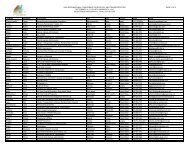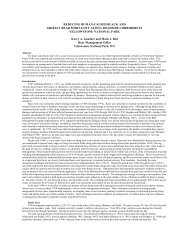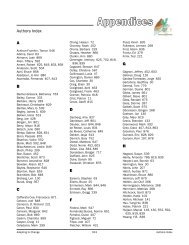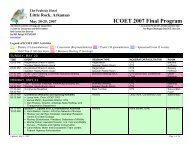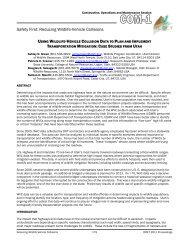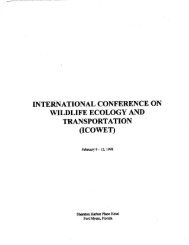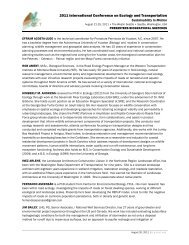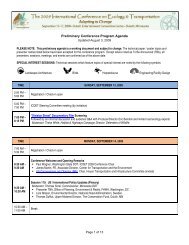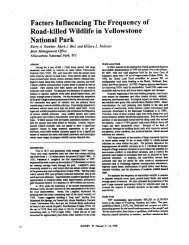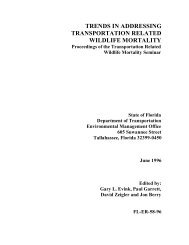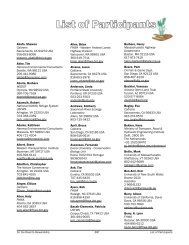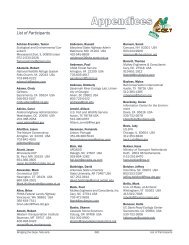Poster Sessions, pages 567-640 - ICOET
Poster Sessions, pages 567-640 - ICOET
Poster Sessions, pages 567-640 - ICOET
You also want an ePaper? Increase the reach of your titles
YUMPU automatically turns print PDFs into web optimized ePapers that Google loves.
Abstract<br />
Effects of a Highway Improvement Project on Florida Key Deer<br />
Israel D. Parker (979-739-0679, iparker@tamu.edu), Anthony W. Braden, Roel R. Lopez, and<br />
Nova J. Silvy, Department of Wildlife and Fisheries Sciences, Texas A&M University, 2258 TAMU, 006<br />
Nagle Hall College Station, TX 77843-2258, Fax: 979-845-3786 USA<br />
Donald S. Davis, Department of Veterinary Pathobiology, Texas A&M University, College Station, TX<br />
77843 USA<br />
Catherine B. Owen, Environmental Management Office, Florida Department of Transportation, Miami,<br />
FL 33172 USA<br />
With an absence of predators, deer-vehicle collisions (DVCs) are the primary source of mortality for the endangered<br />
Florida Key deer (Odocoileus virginianus clavium). Of these collisions, >50% occur on United States Highway 1 (US<br />
1), the primary inter-island roadway in the Florida Keys. DVCs on the 5.6-km section of US 1 on Big Pine Key (BPK)<br />
are responsible for approximately 26% of annual mortality. In 2002, a continuous 2.6-km system of 2.4-m fencing, 2<br />
underpasses, and 4 experimental deer guards was completed on US 1 on BPK. Our objective for this project was to<br />
evaluate the effectiveness of this system in reducing DVCs. Deer heavily used the underpasses built in the fenced area<br />
all 3 post-project years (2003–2005). The fencing successfully prevented Key deer from entering the exclusion area.<br />
In spite of increasing deer population numbers, the US 1 improvement project prevented an increase in DVCs on US 1.<br />
Biographical Sketch: Israel Parker is currently a Ph.D. student in the Department of Wildlife and Fisheries Sciences at Texas A&M<br />
University working on central Texas water quality issues. He received his M.S. in the Department of Wildlife and Fisheries Sciences at<br />
TAMU in 2006 focusing on Florida Key deer.<br />
Bridging the Gaps, Naturally 615 <strong>Poster</strong>s



